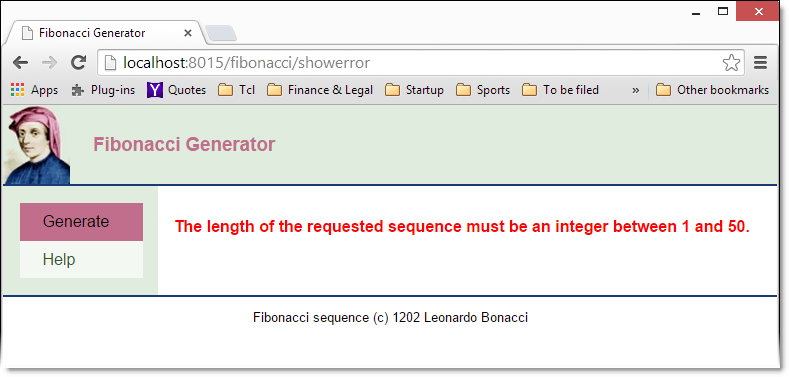Using the flash
We need some mechanism to pass the error message to be
displayed to the error page. Remember that each HTTP request is
independent and may not even be processed by the same interpreter. We
have to therefore pass the error message from the invocation
of generate to the invocation of showerror
through some persistent storage. We could use the session
object we described earlier but there is a slightly more convenient
mechanism. The flash object is similar (and in fact built
on top of the session object) with the difference that
data is stored in it only for the duration of an additional request
and automatically deleted afterwards. This makes it convenient to
store messages or any other data that only needs to be kept around for
the next request.
The last thing to note is that we did not create a view template
for the FibonacciController.showerror method. Instead we
directly set the content of the main section through
the page object. Here is the code.
method showerror {} {
page store main "<p style='color: red; font-weight: bold;'>[flash get error_message {An error has occured!}]</p>"
}
| NOTE | This not the preferred way to create page content as it breaks the separation between display and program logic. However, for simpler cases it can be convenient and avoids cluttering the application with trivial template files. |
If you now type invalid input into the entry box and click Generate, you will see the error page below.
